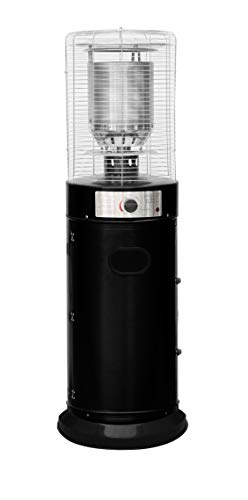The Essential Guide to Buying Patio Heating: Everything You Need to Know
As the weather condition turns cooler, many property owners begin to consider how to extend their outdoor home into the chilly months. Alfresco Heating permits for relaxing gatherings under the stars, improving year-round use of outdoor patios, decks, and gardens. This article will offer a thorough summary of patio heating options, aspects to think about when buying, and responses to regularly asked questions.
Types of Patio Heaters
Patio heaters can be found in different styles and functionalities, each accommodating various user needs. Here's a breakdown of the most popular options:
1. Propane Patio Heaters
- Description: These portable heaters work on propane gas containers.
- Benefits:
- Easy to move and set up.
- Provides immediate heat.
- Suitable for larger outdoor areas.
- Factors to consider:
- Requires routine refilling of propane tanks.
- Might be limited by regional guidelines on outdoor gas appliances.
2. Natural Gas Patio Heaters
- Description: Connected straight to a gas line.
- Advantages:
- No requirement for filling up; a constant supply of hot gas.
- Cost-effective in the long term for frequent usage.
- Considerations:
- Requires professional installation.
- Less portable than propane heaters.
3. Electric Patio Heaters
- Description: Heaters powered by electricity.
- Advantages:
- Easy to install and use; just plug them in.
- Perfect for small gatherings and limited outdoor spaces.
- Considerations:
- Less effective than gas heaters; may not warm large areas efficiently.
- Needs access to electric outlets.
4. Infrared Heaters
- Description: Heaters that use infrared innovation to warm items and individuals directly instead of heating the surrounding air.
- Benefits:
- Highly energy-efficient and eco-friendly.
- Rapid heat without waiting.
- Considerations:
- Effectiveness can be limited by wind.
- Usually more pricey than traditional heaters.
5. Fire Pits and Tabletop Fireplaces
- Description: Open flame systems that can also serve as stylish outdoor decor.
- Benefits:
- Multifunctional; supplies heat and ambiance.
- Considerations:
- Requires constant guidance and maintenance.
- Less efficient heat distribution compared to other heaters.
Elements to Consider When Buying Patio Heaters
Buying patio heating needs cautious factor to consider to ensure you buy a system that meets your specific needs. Below are crucial elements to examine:
- Size of the Area:
The main factor to consider is the size of the outdoor space you wish to heat. Larger outdoor patios may need more effective heaters or numerous units to disperse heat successfully. - Heating Capacity:
This is measured in BTUs (British Thermal Units). Usually, greater BTU scores indicate a heater that can produce more heat. - Mobility and Placement:
Determine whether you choose a portable option or a repaired setup. Believe about where you plan to position the heater, and how frequently you may require to move it. - Fuel Source:
Evaluate your preference for propane, gas, or electrical models based on schedule and convenience. Each fuel type has associated costs and factors to consider. - Security Features:
Opt for designs geared up with safety features such as tip-over protection and automatic shut-off. This is essential when utilizing heaters in outdoor areas. - Design and Aesthetics:
Choosing an aesthetically enticing heater can enhance your outdoor environment. Try to find options that match your existing furniture and design. - Weather Resistance:
If the heater will remain outdoors all year, think about models designed to withstand various weather components such as rain or snow.
Contrast Table of Patio Heaters
| Type | Heat Source | Portability | Price Range | Pros | Cons |
|---|---|---|---|---|---|
| Propane Patio Heaters | Propane Gas | High | ₤ 100-₤ 400 | Immediate heat, portable | Requirements filling up, regional policies |
| Gas Heaters | Natural Gas | Low | ₤ 300-₤ 700 | Continuous supply, cost-effective | Requires setup |
| Electric Patio Heaters | Electrical energy | High | ₤ 50-₤ 300 | Easy to utilize, no fuel needed | Restricted range and heat |
| Infrared Heaters | Electrical energy | Medium | ₤ 150-₤ 500 | Efficient, instant heat | Wind impacts, greater expense |
| Fire Pits/ Fireplaces | Wood/Gas | Variable | ₤ 100-₤ 600 | Decorative, multifunctional | Needs guidance, maintenance |
FAQs About Patio Heating
1. The number of BTUs do I require for my patio?
The variety of BTUs required depends upon the size of your patio. A basic standard is:
- Up to 20 sq ft: 10,000 BTUs
- 20-50 sq ft: 20,000 BTUs
- 50-100 sq ft: 30,000 BTUs
2. Are patio heaters safe to utilize?
Yes, as long as safety guidelines are followed. Try to find heaters with security features and guarantee they are operated in well-ventilated locations.
3. Can electrical patio heaters be utilized indoors?
It is not suggested to utilize outdoor heaters inside due to the threat of fire and carbon monoxide accumulation. Always verify manufacturer guidelines.
4. What is the average cost to run a patio heater?
Operating expenses vary extensively based on the type of fuel and energy costs in your area. For electric units, typical use may cost around ₤ 0.07-₤ 0.30 per hour.
5. How do I maintain my patio heater?
Routine upkeep includes cleaning up out any particles, examining gas connections for leakages, and ensuring that electrical parts are safe and secure and working.
Purchasing patio heating is an excellent way to extend the satisfaction of outdoor areas well into the cooler months. With many options available, possible purchasers must assess their unique needs, space dimensions, and preferred heating approaches. By thinking about the factors and contrasts provided in this post, homeowners can make an educated decision and guarantee their patio stays a comfy social center throughout the year.

